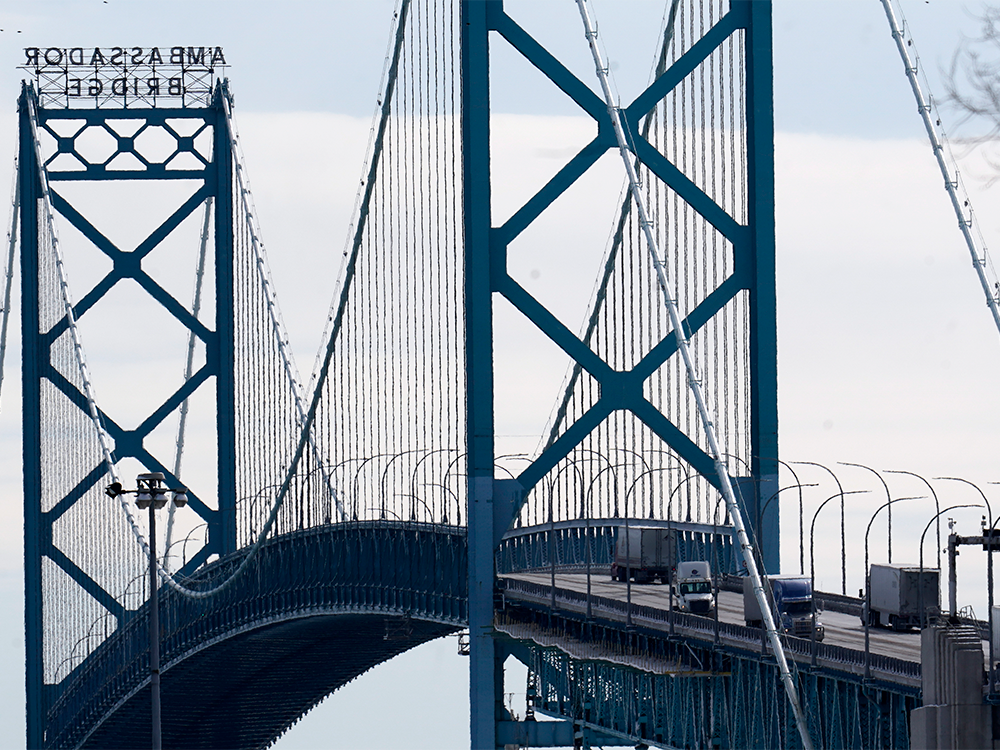Why a U.S. global tariff is the real existential trade threat facing Canada

Opinion: Canada must prepare for a world where the old trade playbook no longer applies

Article content
By Dan Ciuriak and Carlo Dade
The North American free trade pact (USMCA) comes up for renewal in 2026, but the potential loss of the agreement isn’t the biggest trade threat facing our country.
On the ballot in the United States this November, figuratively speaking, is a proposal for a global tariff on all imports to the U.S. that starts at 10 per cent, rising five per cent every year that the U.S. imports more than it exports, which has been a recent trend. So, 10 per cent in year one, 15 per cent in year two, 20 per cent in year three and 25 per cent in year four.
Advertisement 2
Story continues below
Article content
The proposal’s proponents have made clear that Canada would not be exempted.
Republican presidential candidate Donald Trump has increasingly referenced this idea of a global tariff but has been vague on details. Those details are found in the proposal developed by one of the leading economic, populist think tanks in Washington, D.C., which is strongly connected to Trump’s running mate, J.D. Vance, and Trump’s former chief trade negotiator, Robert Lighthizer. So, this proposal is not just a MAGA product; it comes from and reflects the emerging new trade orthodoxy of economic populism and is equally at home on the left and right in the U.S.
The idea of a global tariff is a real threat, and the U.S. has gone there before. In 1971, then-president Richard Nixon imposed a 10 per cent surcharge on all imports to the U.S. as part of a broader response to persistent pressures on the U.S. balance of payments and the dollar’s exchange value under the Bretton Woods system, with a larger aim of bringing jobs home.
The impacts on Canada were less severe than they might have been because the Nixon tariffs exempted oil and autos, which were about one third of Canada’s exports to the U.S. Also, the 1971 tariffs lasted only five months and lacked an escalation provision.
Article content
Advertisement 3
Story continues below
Article content
But the goal of Trump’s initiative is the same as Nixon’s — reclaim jobs for Americans by forcing manufacturing to return to the U.S. This time, however, the U.S. is bringing a bigger stick to a much bigger problem.
With the Nixon measures, Canada had no warning; this time, it has advance notice. Canada needs to use this time to prepare, not panic — and it needs to do so now.
New ideas, new policies and engagement strategies are desperately needed.
Our standard, post-North American Free Trade Agreement (NAFTA) engagement playbook offers little, if anything, for this new reality. “We are your biggest trade partner” is not a winning line with people and politicians who see trade as the theft of American jobs and want to force Canadian firms to relocate to the U.S.
The practice of directly arguing our case will, with initiatives such as the global tariff, come across as “foreign interference” by Canadians and be ammunition for proponents of the tariff. Helping Americans fight the initiative will instead require walking an exquisitely fine line of supporting those opposed to a global tariff in a way that does not give ammunition to MAGA and left-wing populists. How to achieve that is not obvious. We can be confident that we and our allies in the U.S. have reason and an understanding of the downsides of the Nixon experiment on our side. But what if, as we’ve seen, reason is not enough?
Advertisement 4
Story continues below
Article content
We have to consider how to respond. Our response to the shock of the Nixon tariffs was to push trade diversification. This time, that is not a viable option: we already have conventional free trade agreements with the United Kingdom, the European Union and the major economies of the Pacific Rim. Improving trade with myriad smaller and more distant economies cannot offset a five per cent U.S. tariff, let alone a 25 per cent tariff. More recently, when the U.S. imposed tariffs on Canadian steel and aluminum imports under Section 232 of the U.S. Trade Expansion Act of 1962, Canada retaliated and negotiated a mutual withdrawal. But this was only a temporary truce, under which the tariffs were put on indefinite hold, not repealed. This time, we likely will not get even that concession. Worse, for a tariff as large and far reaching as the proposed global tariff, economic modelling clearly shows that tariff retaliation would make things even worse for Canada. If we expect reason to prevail, retaliation makes sense; if not, it does not.
When asked if the global tariff could spark a global trade war, proposal proponents have replied no, because “America is already in a trade war.” Apparently, it’s a war not just with China.
Advertisement 5
Story continues below
Article content
To wage this war, the Trump administration spent US$28 billion to compensate U.S. farmers for losses from Chinese retaliation to American tariffs. China has been investing billions of dollars to increase strategic reserves of key food and industrial imports to defend itself from future U.S. trade measures.
The global tariff is but one possible manifestation of the trade war that China and the U.S. are waging against each other, one that now appears to be going global and increasingly dragging in Canada, as evidenced by the fallout from our recent imposition of electric vehicle tariffs to align with the U.S.
Recommended from Editorial
If Canada’s two largest trade partners are investing billions of dollars in trade war capacity, then can Canada continue to focus solely on trying to save the rules-based trade order by negotiating with the Americans? Canada needs new strategies, new focus, and new spending to start preparing for a trade war that others are already fighting.
Dan Ciuriak is a director and principal at Ciuriak Consulting (Ottawa). Carlo Dade is director of trade and trade infrastructure at the Canada West Foundation.
Article content








Comments